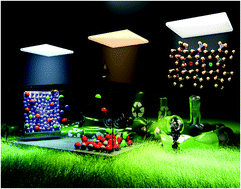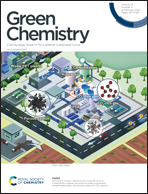Tailoring of a highly stable Mn1−x−y(CexLay)O2−δ pseudocapacitor thin-film and rare earth oxide nanospheres through selective purification of rare earth oxides derived from Ni–MH batteries†
Abstract
Growing utilisation of rare earth elements (REEs) has caused severe shortages in REE supply and shifted the state-of-the-art approaches toward sustainable recycling of REEs containing wastes. The present work reports a three-step strategy based on selective purification of rare earth oxides (REOs) isolated from end-of-life nickel–metal hydride (Ni–MH) batteries leading to a high-yield fabrication of two value-added functional nanostructures including a defect-rich Mn1−x−y(CexLay)O2−δ film and REO nanospheres. During the first step, major impurities (Fe and Al) were removed from a REE-rich solution. In step two, the resulting solution with a trace amount of Mn was further purified through electrodeposition resulting in the synthesis of a non-stoichiometric Mn1−x−y(CexLay)O2−δ film, in which Ce4+/3+ and La3+ ions were dissolved in an MnO2−x lattice. The pseudocapacitance functionality of the film showed a high volumetric capacitance of 828 F cm−3 with an outstanding retention of 83% after 16 000 cycles. The excellent electrochemical performance was attributed to an improved charge carrier transfer rate, a significant number of active sites, and an intervalence charge transfer (IVCT) phenomenon occurring between Mn and Ce cations with multiple oxidation states. Furthermore, a symmetric solid-state two-electrode device validated the practical functionality of the film. During the last step, the remaining solution was purified further that led to the formation of REO (La, Ce, and Nd) nanospheres with ∼40–50 nm diameter. Lastly, a brief comparative environmental impact analysis was conducted, revealing the remarkable ecological importance of such waste valorisation process.



 Please wait while we load your content...
Please wait while we load your content...